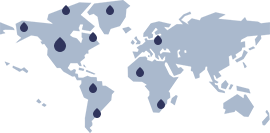The President Message
Dear Fellow Members,
I wish to thank all my predecessors for building SPWLA’s significant presence regionally as well globally. I really hope and trust in a great future for the SPWLA as we see so much energy and passion across all generations of our member community. However, I further wish more and more strengthened and mutually enriching technological and knowledge based exchanges, collaborations and ideations among the vibrant members of the society. Higher levels of participation and engagement with young professionals, local chapters, and student chapters would be highly appreciated. Let us unite in forging a technologically thriving network through SPWLA India chapter and eventually make this professional platform to transcend the regional boundary. Metaphorically as SPWLA has widened the horizon of the revered peer reviewed journal from ’Log Analyst’ to ‘Petrophysics’, we also look forward to expand our knowledge-scape to fathom the unfathomable. I hope we all will join hands in continuing to support our various workshops, topical conferences, annual symposium, and all other SPWLA initiatives.
Read More
Events

Objectives
History
Initially the Society was established in the year 1987 at Dehradun in the name of Joseph Koithara Well Logging Society (JKWLS) in fond memory of Late Shri Joseph Koithara, an eminent Petrophysicist of the country. It has been revived from dormant stage in 2005 and shifted its activities to Mumbai, a hub of hydrocarbon exploration in India. Subsequently it has been renamed as SPWLA-India chapter in 2007.


